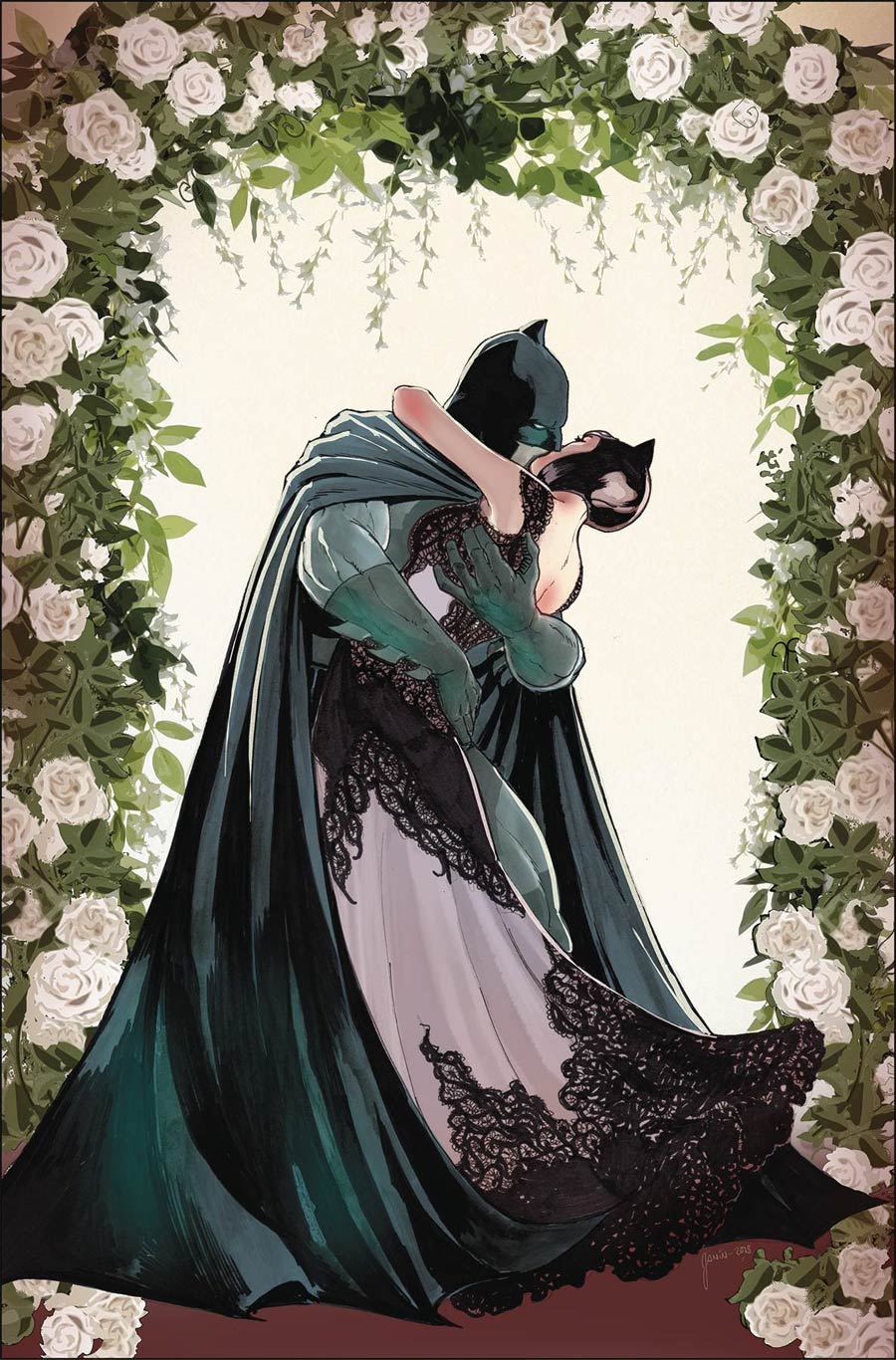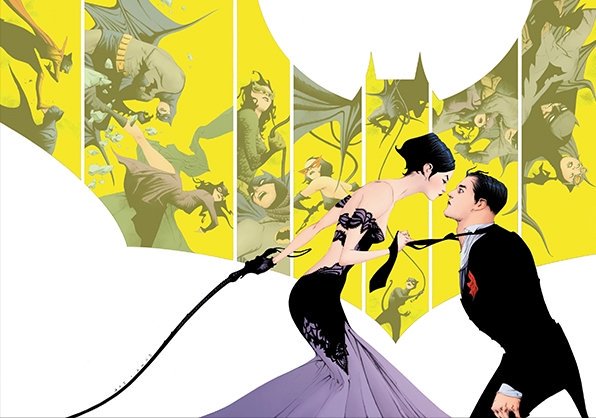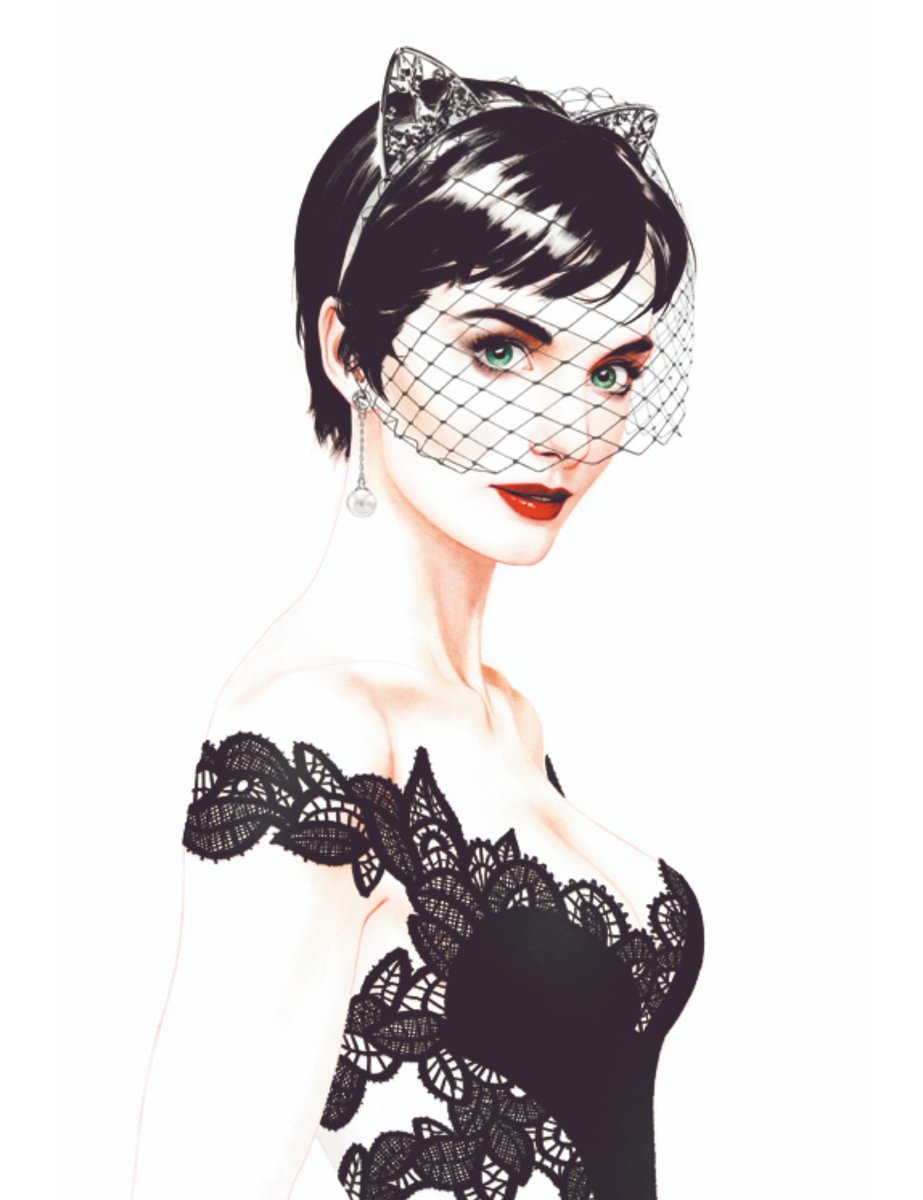REVIEW: Batman #54 by Tom King, Matt Wagner, Tomeu Morey, & Clayton Cowles
By Zack Quaintance — Batman #54 is a stand-alone tale that uses the character’s longest-standing relationship—Bruce Wayne’s adoption of Dick Grayson, which goes back to Detective Comics #38 in 1940—to tell a heartfelt father-son story. In this comic, grown Dick is visiting Bruce, who is still suffering serious heartache following the events of Batman #50.
**BEWARE if you haven’t yet read it, I’d hate to spoil the emotional trajectory.**
The pattern of the book’s structure intermingles the present day with the past, using snippets of Dick’s first days at Wayne Manor, when he was freshly-orphaned, a sad and furious youth, understandably stunned by the loss of his own parents, guarded and distrustful and stubbornly bent on acting out. We get a scene of young Dick struggling as Bruce tries to comfort him. Then we get a scene of adult Dick cracking wise as he and Bruce fight some of their most ridiculous foes (Crazy Quilt, Condiment King, etc.), with now Bruce being the one who won’t express himself.
The construction is perfect, so emotional. King is a student of comics history, a writer who so obviously appreciates this character’s past. He knows what he has here with arguably the most ubiquitous duo in the world. Up there with Lewis and Clark, Sonny and Cher, peanut butter and jelly...Batman and Robin. King savvily knows his audience will mostly all have some level of emotional attachment to this bond, likely one that connects back to their own childhoods.
That brings us to the other major creative decision that makes this such a heartrending comic. King’s script never once calls for young Robin in costume, because this isn’t about the dynamic duo’s adventures. King instead reels us in with the far more relatable moments in which Bruce was simply an adult caring for a child who needed him. We’ve all been there, with older readers (of which Batman surely has many) having been on both ends.
There’s an early scene here where young Dick has a nightmare about his parents dying and wakes up screaming. Bruce runs to comfort him, to just be there. King—to his credit—gets out of the way and doesn’t overwrite. Wisely, there’s no narration throughout. While comforting Dick after his nightmare, Bruce is actually laconic, as most fathers surely were, saying It’s okay, boy. It’s a dream. You’re safe. It’s not much, but it’s perfect.
And the issue is littered with similar relatable moments. There’s Bruce asking adult Dick how long he’s planning to stay. I practically heard my own dad trying to ask me about my life, So, uh, what’s new with you? So much always unsaid. And there’s Dick and Bruce bonding while watching football, which might as well have been my living room as a kid. It just all so perfectly captures the emotional fragility of heart-aching men, our deep desire for someone to reach out and our crazy inability to let would-be comforters see us suffer. It’s what makes father-son stuff so inherently fraught, and it’s rendered so gorgeously here via one of the most enduring father-son relationships in all of fiction.
“Writer: Tom King
Artist: Matt Wagner
Colorist: Tomeu Morey
Letterer: Clayton Cowles
Price: $3.99
Release Date: September 5, 2018”
Much credit should also go to Matt Wagner’s art. Wagner is an incredible cartoonist operating at full strength. As emotional as the story is, the depiction of faces and the framing of certain shots is just as vital (if not more so). Essentially, Wagner’s work brings out the potential of King’s words. I’m a noted big sappy baby, so it doesn’t mean much for me to say this issue made me cry, but oh man did this issue make me cry. I loved it.
Overall: Following the three-part Cold Days arc is a tough act, but the standalone story about the father-son relationship between Bruce Wayne and Dick Grayson in Batman #54 pulls it off. Matt Wagner’s art is fitting and emotive, and Tom King’s script is tonally perfect, an honest look at the emotional fragility of hurt men and how difficult it is to open up. 10/10
For more comic book reviews, check out our review archives.
Zack Quaintance is a journalist who also writes fiction and makes comics. Find him on Twitter at @zackquaintance. He lives in Sacramento, California.












